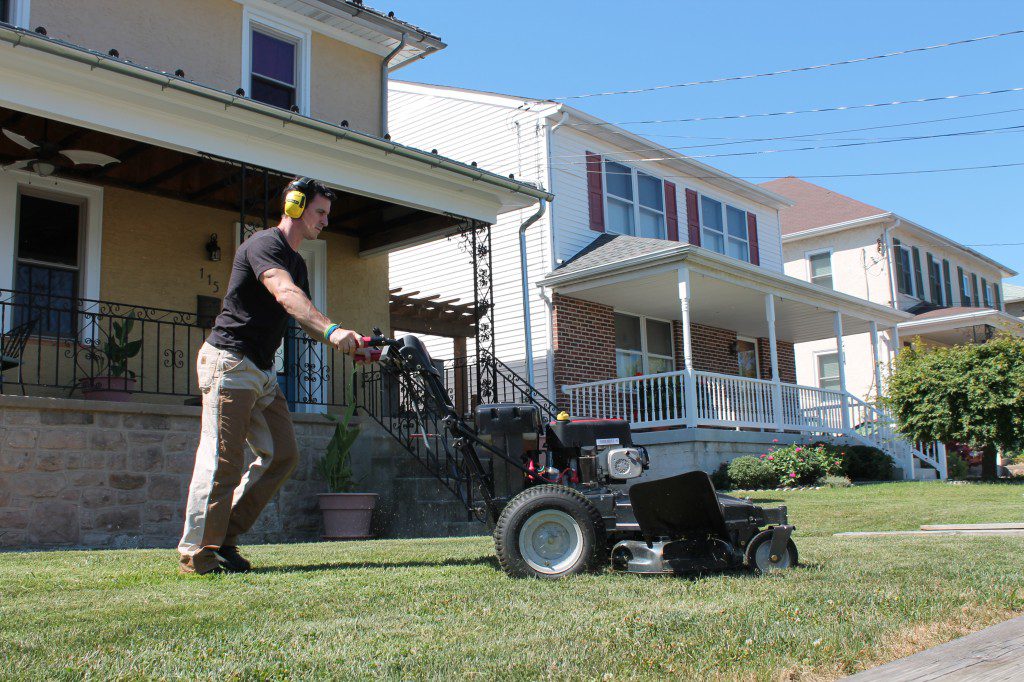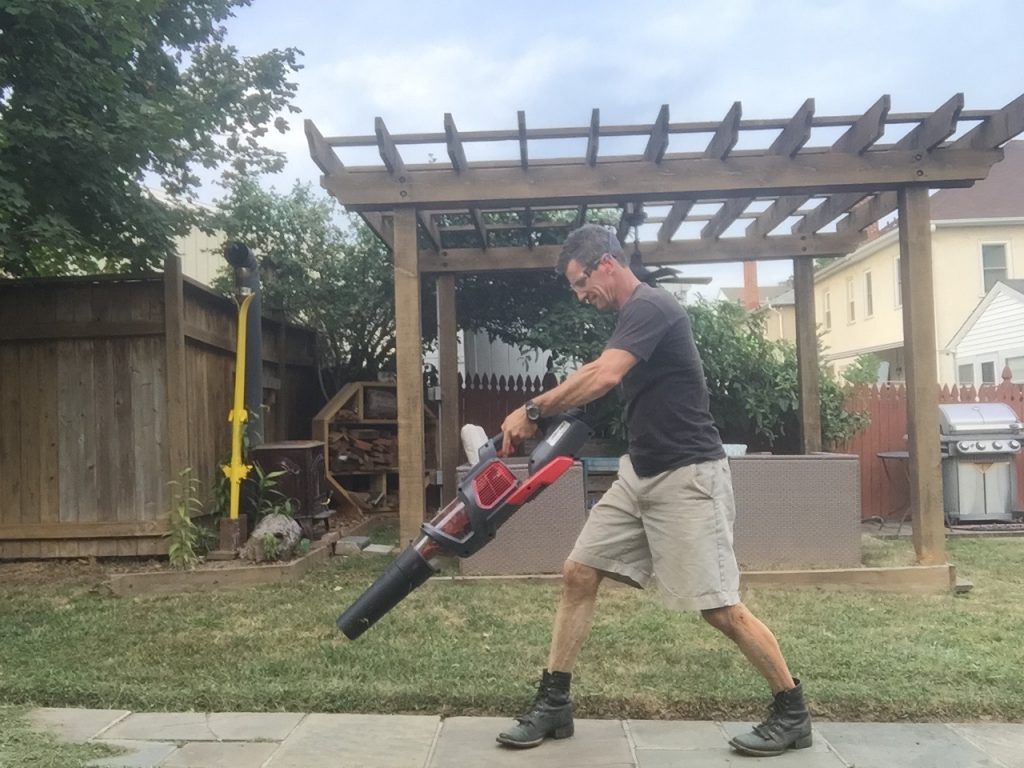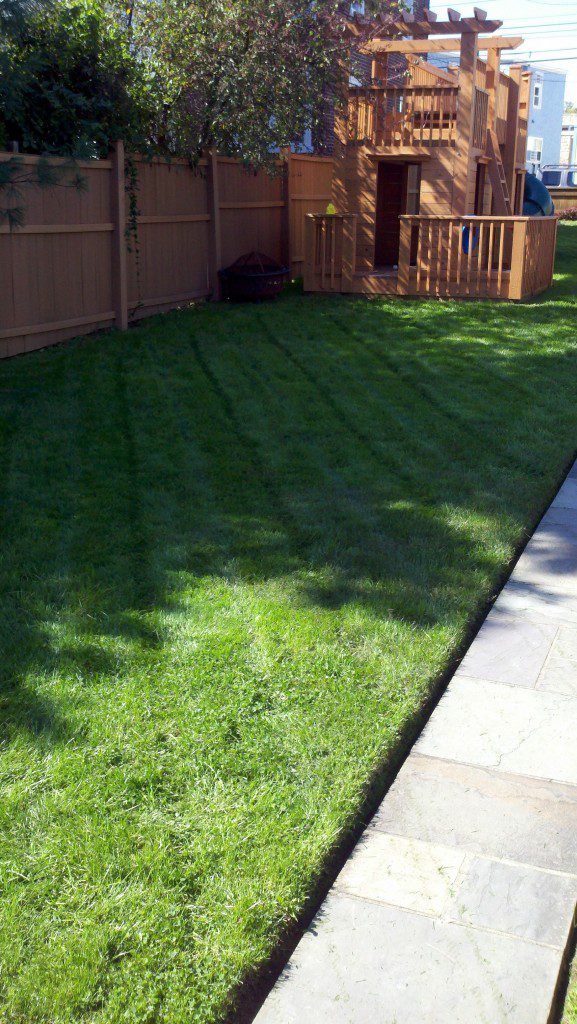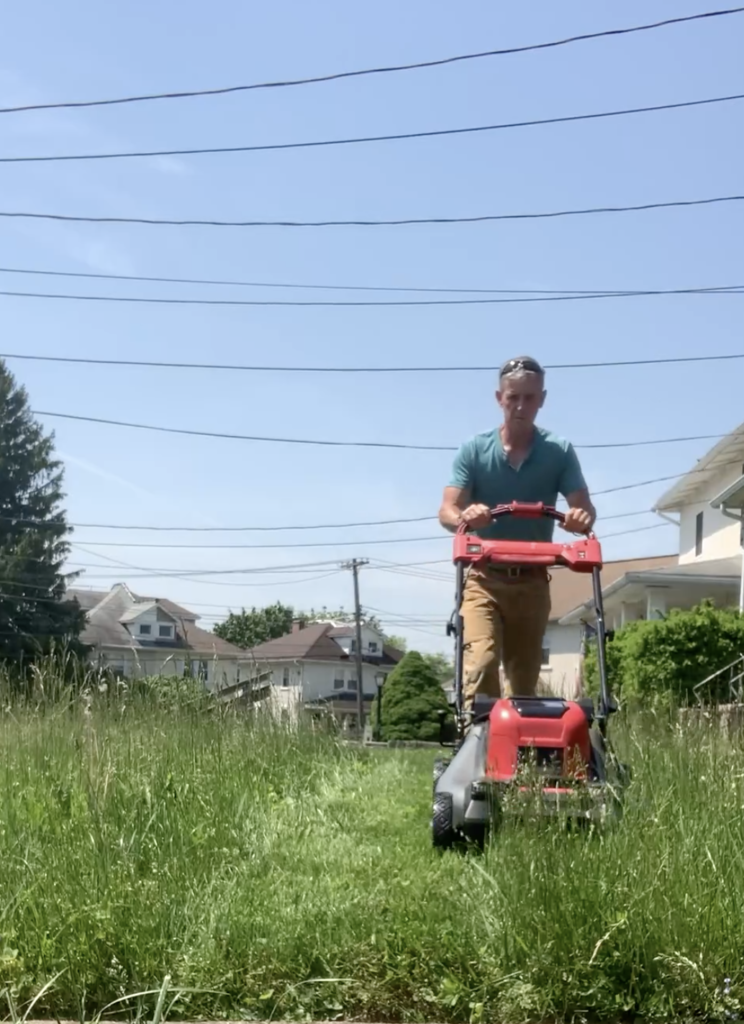Learning how to mow grass is handy skill that benefits every landowner, no matter how much grass in on the plot.
Why it’s important to know how to mow grass
After interacting with many lawns this season, it has come to my attention that more people really don’t know how to mow grass than I would have guessed. The list includes lawns at neighbors, customers, rentals down the street, mow and blow guys desperate to make money fast and just don’t know.
Sure, they have the basics: Start mower. Walk back and forth until tall grass isn’t as tall.
But the the disaster areas they’re leaving behind looks more like a farmer scythed his or her fields for hay than anything resembling a mowed lawn. Let me be the first to tell you: If the lawn looks like the next machine that’s going to come work on it is a hay baler, you’re doing it wrong.
Maybe some people don’t care. Others can’t see that it’s a mess. (Seriously, when clumps of grass are blown 16 inches into the mulch beds, how is this not visible?) And I think some are trying to take on DIY jobs as new homeowners that they never had to do as kids. And maybe still others grew up without grass to mow. Whatever the source of the “why”, the following is the “how to.”
If the lawn looks like the next machine that’s going to come work on it is a hay baler, you’re doing it wrong.
Frequency
This may come as a shock to some, but grass grows. All the time. There’s an entire industry built around shortening it, but we’ll discuss that another time.
For those of us in the Northern tier of the country, grass grows like gangbusters in the Spring and Fall, Fall being my favorite time to aerate, seed, fertilize and get the grass going for the following Spring.
To stay ahead of it and minimize the Farmer’s Field Syndrome, mowing weekly is kind of important. For various reasons from tool reviews to life getting way ahead of me, I’ve let the lawn get away from me here at MFIUL HQ and it took more work to mow it once and get it back to manageable than it did to mow it once a week.
Farmer’s Field Syndrome
But our lawns do get away from us, whether that’s a broken mower, an injury or illness, or new baby…life…it happens. So how do we get it back under control?
If your lawn has been growing for a month and you expect to return it to its normal, mowed state by just plowing through it with your mower as is, just get ready now to throw your own time and sanity away.
Will it eventually work? Sure. But it’s going to hurt. It’s going to hurt you because it’s exhausting. Your machine, because it’s going to be unnecessarily taxed and get all clogged up with wet grass. It’s going to hurt the grass that doesn’t like being decapitated as a means of maintenance.
See that lever or handle there on your mower that adjusts the blade height? Yeah, we’re going to use that.
Then we’re going to take a few more passes so we can get this lawn under control.
Step 1: Set the mower height.
After weed whacking the areas that need trimming and creating nice wide boarders around everything so the mower can reach, raise the mower height to the maximum.
Step 2: Side-discharge and make strategic passes.
If your mower has it–and I recommend mowers should have it–set it to side-discharge. We’re a long way away from being able to effectively or efficiently mulch anything. Now mow and shoot the grass. It’ll probably clog, but do your best.
Also, once you have a swath cut, run half the lawnmower over the next pass. This will give the machine more space in the mower deck to process the grass flooding into it.
I’ve had lawns so bad that I’ve opened the rear chute for bagging grass and the side discharge chute. It’s against manufacturer recommendations, but I made sure none of the grass was shooting at me.



Step 3: Mow the clippings.
With the lawnmower at the same height–or just one notch lower, depending on how tough the first mow was–mow all the clippings you just deposited on the lawn.
This second pass will catch more tall wisps the mower couldn’t process the first time and it’ll process some of the clippings.
Step 4: Mulch.
With the lawnmower set up for mulching, grind up what’s there now. If it feels right, try lowering the mower another setting. The grass will still be tall, but it’ll be mowable.
Step 5:
We’re back to frequency again. Over the next few weeks, mow on schedule and gradually lower the mower to your desired setting. I like mowing grass on setting 4–taller than recommended where I live–because it chokes the weeks out more and the lawn is healthier and greener in the Dog Days of summer.
DIY Summary
The basic idea here is to not feel like you have to mow all at once and get a golf course green. It’s not realistic, not good for your equipment, sanity or grass.
If you miss a week or whatever because life happens, side discharge and live with the mulch on the lawn for a week and get back in the game.
And please blow that grass out of the bark mulch beds.
Mow-er on this topic in another blog.






